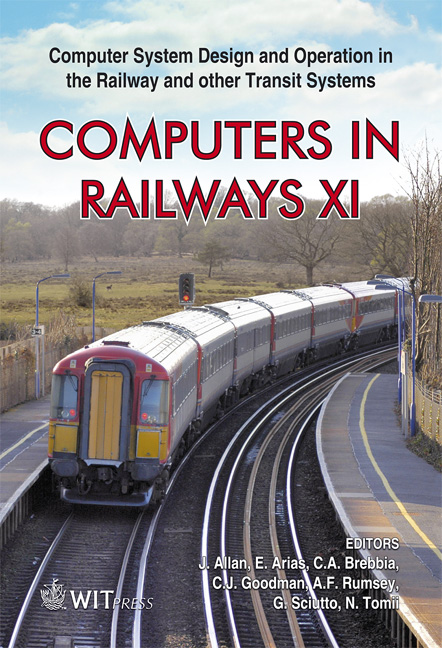A Model For The Life Expectancy Of Railway Switches And Crossings For Maintenance And Renewal Planning In Asset Management Systems
Price
Free (open access)
Transaction
Volume
103
Pages
9
Page Range
765 - 773
Published
2008
Size
646 kb
Paper DOI
10.2495/CR080741
Copyright
WIT Press
Author(s)
W.-J. Zwanenburg
Abstract
With the help of databases of the Swiss Federal Railways (SBB CFF FFS), statistical analyses are carried out on the lifetime of railway switches (points) and crossings. The expected lifetimes are attributed to different parameters which influence the speed of geometrical degradation or wear of the material, e.g. total train loads (expressed in cumulative tonnages), axle loads, train type, the quality of the foundation. First results confirm long known basic knowledge, e.g. a gradual increase in the average replacement age due to better components and changing maintenance politics. At the same time unexpected results are found. Examples of these are the not statistically confirmed reduced lifetime of a switch being placed in a curve, or the complete irrelevance of the switch angle on their expected life duration, although a shorter life with larger angles would be expected due to higher dynamic lateral loads and jerk. Some explanations for these unexpected results are given and are probably related to both the situation in the field and non technical issues, like maintenance policy. With this knowledge on degradation, a model is composed which is used to forecast maintenance and renewal needs of switches and crossings To test the model, an old asset database with switches and crossings is used, and the results of the model (proposed replacements including the time of replacement) is compared with the actually carried out works. Keywords: railways, switches and crossings, renewal, maintenance, asset management systems.
Keywords
railways, switches and crossings, renewal, maintenance, asset management systems.





